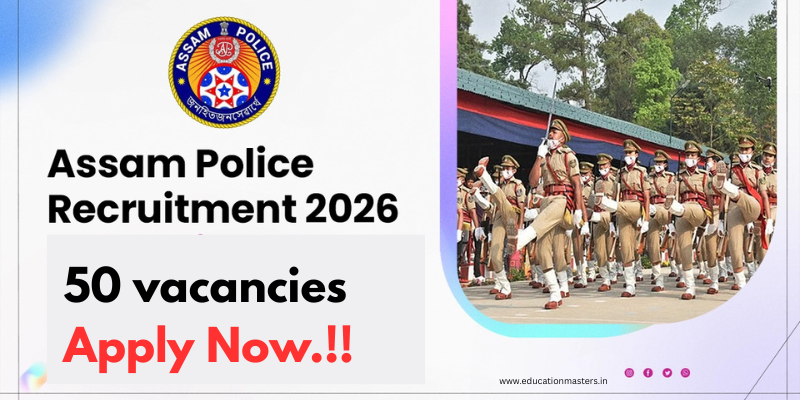Statewise Prepration
Govt. Examwise MCQ
1946+ MCQ Questions in english हिन्दी
In which River of himachal pradesh Gold has been found ?
Gold particles have been found in the Chenab River in Himachal Pradesh. The river carries traces of gold in its sand and sediments, mainly from the surrounding Himalayan rocks. This is why, in most general knowledge (GK) questions, the correct answer is Chenab River.
Who appoints the Advocate General of Uttar Pradesh?
Explanation: The Advocate General is appointed by the Governor of Uttar Pradesh under Article 165 of the Constitution. He or she acts as the highest legal officer of the state and advises the state government on legal matters. The Advocate General has the right to speak in the Legislative Assembly but cannot vote. This post is equivalent to the Attorney General at the central level. The person must be qualified to be a High Court judge.
Which built-in method returns the character at the specified index in a string?
What is the correct syntax for a ternary operator?
What keyword is used to handle exceptions?
How do you call a function named myFunction?
The National Aquatic Animal of India, often found in Bihar rivers, is:
This dolphin species, often found in the Ganga river, is declared India’s National Aquatic Animal and is protected especially in Bihar’s stretch of the river. Commonly appears in Bihar environmental science questions.
What is the function of Krishi Vigyan Kendras (KVKs) in Bihar?
KVKs (agricultural science centers) train farmers, demonstrate new methods, and conduct soil/water testing, forming a backbone of rural agricultural extension in Bihar.
Which keyword declares a block-scoped variable?
What will 0.1 + 0.2 === 0.3 return?
What does typeof NaN return?
Which gas is used in the manufacture of ammonia in the Haber process?
Explanation: In the Haber process, nitrogen and hydrogen gases are combined under high pressure and temperature in the presence of an iron catalyst to produce ammonia (NH₃). Hydrogen is typically obtained from natural gas or water electrolysis. Ammonia is essential for fertilizer production. This process revolutionized global agriculture in the 20th century.
Which process helps in the purification of water through natural filtration in the soil?
Explanation: Percolation is the process where water slowly filters through the soil and rocks, helping in the natural purification of water. This movement removes many impurities and harmful organisms. The filtered water eventually collects in underground aquifers. It is crucial in the natural water cycle. Human interference often affects this important ecological function.
The budget of the Uttar Pradesh government is presented in the Assembly by:
Explanation: The State Finance Minister presents the annual financial statement or budget in the Legislative Assembly. It outlines the revenue, expenditure, and fiscal plans for the year. The budget must be approved by the majority in the Assembly. It’s a critical tool for governance and development. Public services and infrastructure projects depend heavily on its provisions.
The 73rd Constitutional Amendment led to the establishment of which governing body in Uttar Pradesh?
Explanation: The 73rd Amendment to the Constitution in 1992 brought about a three-tier system of Panchayati Raj in rural India, including Uttar Pradesh. It ensured decentralized governance with elected bodies at the village, block, and district levels. These bodies receive funds and have administrative roles. In UP, they play a key role in rural development. Elections are held every five years.
Which political party ruled Uttar Pradesh for the first time after independence?
Explanation: After India’s independence in 1947 and the formation of the state of Uttar Pradesh in 1950, the Indian National Congress formed the first government. Govind Ballabh Pant served as the first Chief Minister. The Congress dominated UP politics until the late 1980s. Its decline led to regional parties gaining ground. This marked a shift in the political landscape.
What is the term of the Uttar Pradesh Legislative Council members?
Explanation: Members of the Legislative Council (Vidhan Parishad) in Uttar Pradesh serve a term of six years, with one-third retiring every two years. This ensures continuity in legislative functioning. The body acts as a permanent chamber, unlike the Legislative Assembly. It provides experienced oversight in lawmaking. Teachers, graduates, and local bodies elect some of its members.
In Uttar Pradesh, which body holds elections for the post of Mayor in Municipal Corporations?
Explanation: The State Election Commission conducts elections for urban local bodies such as Municipal Corporations, including the election of Mayors. It ensures free and fair polls under Article 243K of the Constitution. The Mayor is directly elected by the public in UP. This system enhances local democratic participation. The Commission is an autonomous constitutional body.
Who presides over the joint sitting of the two houses of the Uttar Pradesh legislature?
Explanation: Unlike the Parliament of India, there is no constitutional provision for a joint sitting of the two houses in state legislatures. The Legislative Council (Upper House) and Legislative Assembly (Lower House) function independently. In case of disagreement, the Assembly's decision prevails. This reflects the supremacy of the directly elected house. The Council serves only as a revisory body.
Which schedule of the Indian Constitution deals with the allocation of seats in the Legislative Council of Uttar Pradesh?
Explanation: The composition and allocation of seats in the Vidhan Parishad (Legislative Council) are governed by the Representation of the People Act and not directly listed in a specific schedule. The creation and structure of the council are subject to Article 169. The central Parliament must pass a law based on a resolution passed by the state. This allows flexibility for different states.
Under which article of the Constitution does the Governor of Uttar Pradesh act as the Chancellor of state universities?.
Explanation: The Governor’s role as Chancellor of state universities is defined under respective state university acts, not the Indian Constitution. In Uttar Pradesh, the Governor presides over university convocations and approves vice-chancellor appointments. This position is largely ceremonial but symbolically powerful. The issue often becomes politically contentious. Recent reforms have tried to reduce gubernatorial control.
What is the minimum number of seats required to form a majority government in the Uttar Pradesh Legislative Assembly
Explanation: The Uttar Pradesh Legislative Assembly has 403 seats. Therefore, a party or coalition needs at least 203 seats to form a majority government. This majority ensures the ruling party can pass bills and stay in power without dependence on opposition parties. UP’s large assembly size makes coalition management important. A simple majority is often the benchmark in state politics.
The most critically endangered bird species found in UP’s wetlands is:
Explanation: Baer’s Pochard, a diving duck, is listed as Critically Endangered and has been spotted in wetlands of eastern UP. Habitat degradation and hunting are primary threats. Conservation measures include wetland protection and awareness.
Which tree is extensively planted in UP but is controversial due to ecological concerns?
Explanation: Eucalyptus, though fast-growing, depletes groundwater and reduces biodiversity due to allelopathy. Its monoculture plantations in UP have faced criticism. Experts suggest replacing it with native species for sustainable forestry.
What is the goal of the Green UP-Clean UP campaign?
Explanation: This state-run program encourages mass tree plantation drives, especially during monsoons. It also creates awareness about solid waste management, air quality, and river pollution. It engages schools, NGOs, and local authorities.
The major reason for frequent floods in eastern Uttar Pradesh is:
Explanation: Rivers like Ghaghara, Rapti, and Gandak carry heavy monsoon runoff from Nepal, leading to floods in eastern UP. The flat terrain and encroachment of drainage channels worsen the situation. Floodplain zoning is still weak.
The 'Kachre se Kanchan' initiative in Uttar Pradesh promotes:
Explanation: Under this program, municipal solid waste is converted into compost, energy, or recycled materials. Cities like Lucknow and Varanasi have pilot projects. It aligns with Swachh Bharat and circular economy principles.
What is a key objective of the Jal Jeevan Mission in Uttar Pradesh?
Explanation: Jal Jeevan Mission aims to provide piped water to every rural household by 2024. In UP, it focuses on arsenic- and fluoride-affected districts. It is a step toward water security and women’s empowerment.

.jpg)

.jpg)
.jpg)

